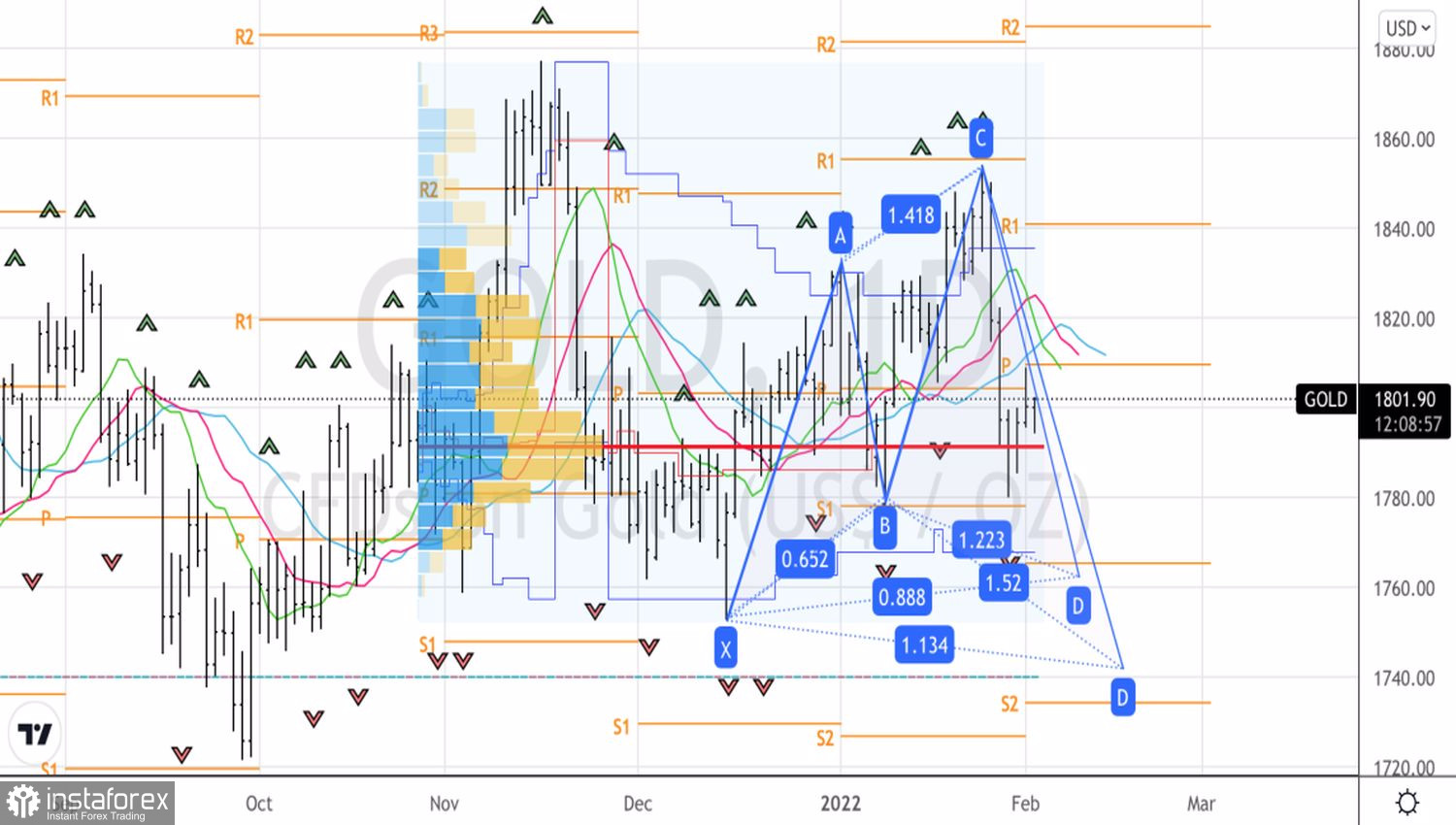Federal Reserve Chairman Jerome Powell's "hawkish" speech at the end of the January FOMC meeting clipped the wings of gold. Powell signaled that the Central Bank would raise the federal funds rate in March and did not rule out the possibility of both its increase by 50 basis points at once, and the tightening of monetary policy at several consecutive meetings of the Committee in a row. As a result, Treasury yields and the U.S. dollar have risen, which usually creates an unfavorable environment for the precious metal.
According to 34 experts of the London Bullion Market Association, the average gold price in 2022 will be close to the current one and will be $1,801.9 per ounce after $1,798.6 in 2021. However, the spread between the most bullish and the most bearish forecast is an impressive $650. Degussa expects to see the analyzed asset at $2,280 per ounce, as the Fed will only make cosmetic changes to the federal funds rate, and the real yield of U.S. Treasury bonds will remain negative. On the contrary, Natixis predicts the precious metal to fall to $1,630 amid aggressive tightening of monetary policy by the Fed and other central banks of the world and a slowdown in U.S. inflation from 7% to 2.8%.
Interestingly, LBMA experts call rates, inflation and market volatility the three main drivers of changes in XAUUSD quotes. While COVID-19 and geopolitical tensions are not as important as before.
Thus, the further fate of gold depends on the dynamics of inflation, the reaction to it from the Fed and financial markets. In particular, the U.S. bond market. In anticipation of the release of data on U.S. employment for January, there is a lull in it. Some investors believe that 10-year yields will continue to rally towards 2.25%, while others, on the contrary, believe that CPI will slow down on its own and the Fed will not have to tighten monetary policy as aggressively as it is currently expected.
Dynamics of gold and U.S. bond yields

The XAUUSD bulls are supported by the inflow of capital into gold-oriented ETFs, which will amount to 42 tons in January, as well as some weakening of the U.S. dollar. Fans of the U.S. currency were disappointed by the speeches of FOMC officials, none of whom supported the idea of raising the federal funds rate by 50 basis points at once in March. Even such a hawk as St. Louis Fed President James Bullard believes that such actions by the Fed will not be able to help. Better to just raise borrowing costs by 25 basis points at meetings in March, May, and June.
"Bulls" on the U.S. dollar are afraid of weak statistics on the U.S. labor market in January. There are rumors in Forex that employment outside the agricultural sector may go negative amid the difficult epidemiological situation in the United States. If this does not happen, the "U.S. dollar" will return the favor of investors, and the precious metal will again fall into a wave of sales.
Technically, a rebound from the moving averages or a break in the fair value of $1,790 per ounce will increase the risks of activation of the Shark pattern with targets at $1,760 and $1,740. We keep the shorts formed from the level of $1,835 and periodically build them up.
Gold, Daily chart






















